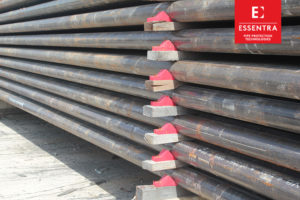[vc_row][vc_column][vc_column_text]
As is frequently the case when massive booms turn into extreme slowdowns, demand for oil country tubular goods has dropped significantly. With the weekly rig count numbers trending even lower, the amount of pipes being shipped out into the field is likewise declining at a level approximately in tandem with it. While none of this is good news in any macro sense of the word, there are individual circumstances where the slowdown has some potential positive consequences for the purveyors of oil country equipment and supplies.
The first thing to remember is that this is a slowdown, not a shutdown. Tubes are still going into the ground, even if it is happening at a considerably reduced rate in comparison to how much was needed at the height of the boom. That reduction in demand is not evenly distributed among all oil field suppliers. Some outfits are undoubtedly being shoved towards the door labeled bankruptcy, even if they haven’t yet gotten there. Other outfits, however, are still moving product out the door and may even be building market share on a percentage basis, if not on a gross sales calculation.
By cutting prices and beefing up their service, some operations are pushing their less-motivated competitors to the wall. Once this winnowing process is complete and conditions improve for the drillers, there will be far fewer oil field service operations in existence. The survivors will be well-positioned to take advantage of their increased market share, and regain much of what they have lost while waiting out the current storm.
While demand for oil country tubular goods may have crashed temporarily, the world is still gobbling up petroleum products at a gigantic rate. Sooner or later, all of those straws will have to go back into the ground. In the meantime, drillers are refining their technical approaches and experimenting with all sorts of new approaches to extraction, designed to lower the per barrel recovery cost. Perhaps sooner than one might otherwise think, those two factors will come together and re-trigger the currently-halted bonanza.
[/vc_column_text][/vc_column][/vc_row]




